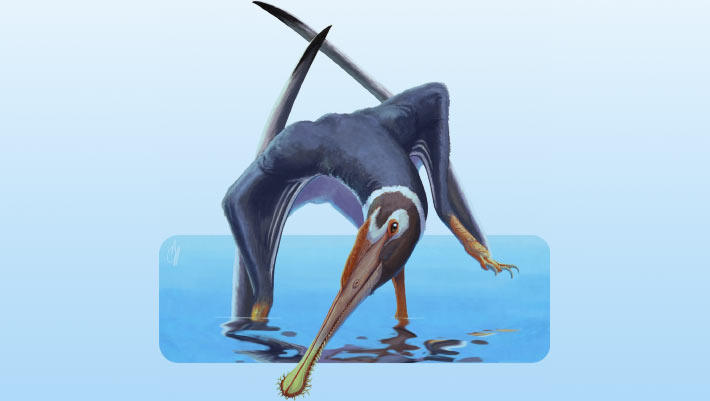Paleontologists have described a new genus and species of gnathosaurine pterosaur, named Spathagnathus roeperi, from a fossilized specimen found in the ‘Solnhofen limestones’ of southern Germany.
Spathagnathus roeperi inhabited the so-called Solnhofen Archipelago during the Late Jurassic epoch, approximately 150 million years ago.
“The Solnhofen limestones of southern Germany are widely recognized as one of the most productive fossil Konservat-Lagerstätten known to date,” said Dr. Alexandra Fernandes, a paleontologist at the Bayerische Staatssammlung für Paläontologie und Geologie, the Ludwig-Maximilians-University and the American Museum of Natural History, and her colleagues.
“The localities and beds found in the area between Solnhofen and Regensburg have been continually explored for some 200+ years (throughout the present day), yielding exceptional material at a prolific rate, and thereby giving a uniquely comprehensive insight into a subtropical shallow marine paleoenvironment of the Late Jurassic.”
“The high paleobiodiversity of the faunal assemblage in the overarching Solnhofen region is attributed to its original depositional setting in depressions within a shallow marine reef environment at the northern shore of the Tethys Ocean, so that this setting has been dubbed the fossil assemblage of the Solnhofen Archipelago in the recent literature.”
A fragment of Spathagnathus roeperi’s rostrum with toothrow was found during systematic excavations in the Brunn quarry near the German city of Regensburg.
“The locality of Brunn represents the oldest locality of the Solnhofen complex, with only one pterosaur having been described from this locality to date,” the paleontologists said.
According to their phylogenetic analysis, Spathagnathus roeperi belonged to the Gnathosaurinae, a small subgroup within the pterosaur family Ctenochasmatidae.
The new flying reptile was also the sister species of the ctenochasmatid pterosaur Tacuadactylus luciae from Uruguay.
“The Solnhofen limestones are abundant in Late Jurassic fossil vertebrates, with pterosaurs being no exception,” the researchers said.
“Within the recognized plenitude of the pterosaurs within this assemblage, although ctenochasmatid remains are relatively abundant, gnathosaurines are scarce.”
Spathagnathus roeperi represents the oldest occurrence of a gnathosaurine and contributes to the paleoenvironmental stratigraphic range for the Gnathosaurinae within the overall fossil assemblage of the Solnhofen Archipelago.
“Furthermore, the new species adds to the known diversity of ctenochasmatids in the Late Jurassic and underlines the importance of this early radiation of pterodactyloid pterosaurs during this time,” the scientists concluded.
Their paper was published this month in the journal PalZ.
_____
A.E. Fernandes et al. A new species and the earliest occurrence of the Gnathosaurinae (Pterosauria) from the Late Kimmeridgian of Brunn, Germany. PalZ, published online June 6, 2025; doi: 10.1007/s12542-025-00725-0

























